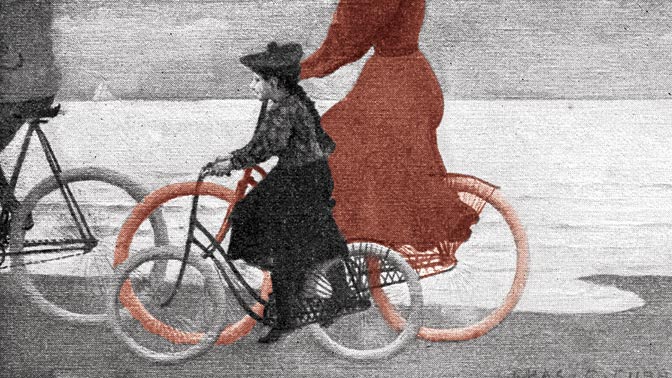
Have you ever heard of a disorder known as train brain? How about bicycle face?
Both are bygone conditions that were, at one time, considered to be serious health problems. They also gained popularity when disruptive technologies (ie, train and bicycle travel, respectively) were first introduced on a grand scale.
The word ‘disruptive’ is used to describe technologies that reshape the world in which we live by creating new markets, changing how we do things or by impacting our core our values.
The connections between disruptive technologies and the rise of associated health concerns are discussed in a recent article by Krembil Director and Senior Scientist Dr. Donald Weaver. In the article, which was published in the journal Neurology, Dr. Weaver creates a new term to describe these disorders, known as disruptive technology disorders (DTDs).
Dr. Weaver also defines four predictable and step-wise stages through which the popularity of DTDs rise and fall. These include the introduction of the new technology in the ‘preliminary phase’; the first description of the DTD, known as the ‘initial moderate phase’; to an ‘extreme phase’ during which the number of purported sufferers quickly increases; and, finally, a ‘second moderate phase’ in which the pandemonium of the ‘extreme phase’ subsides.
One example of this, already alluded to above, is train brain (or railway spine). The term was first used in 1866 by British surgeon John Erichsen, during a time when commercial rail travel was gaining popularity, to describe posttraumatic back pain and headaches that were believed to be caused by the frequent accidents of early rail travel. Despite improvements that made rail travel safer, train brain continued to be diagnosed, such that even minor accidents were implicated. By the early 1900s, close to the peak of rail use, and after various studies failed to identify physical injury associated with the condition, diagnosis of train brain subsided.
Other DTDs include elevator sickness, automobile-induced neurasthenia and phonograph-induced musicophobia. One commonality between these disorders is that they often involve neurologic symptoms, such as headaches, dizziness and feelings of weakness.
The most recent DTD included in the article is cell phone sickness. In 1998, at the peak of cell phone-related health concerns, a Royal Society of Canada panel investigated the condition, which was characterized by headaches, dizziness and the fear of brain cancer. Since then, as cell phone use has increased immensely, the number people suffering from the disorder has sharply declined, suggesting that this DTD has progressed beyond the ‘extreme phase’ and has entered the final, and more moderate phase of the DTD lifecycle.
With the advent of smart phones and social media, a new condition is emerging known as net-brain (also iDisorder) which is characterized by ‘narcissism, poor attention span and fear of missing out.’ While you may think that you know someone with this disorder, only time will tell whether net-brain is the next DTD.
To learn more about the interplay between disruptive technology and health, read more at UHN.ca.
Supported by the Toronto General & Western Hospital Foundation. DF Weaver holds a Tier 1 Canada Research Chair in Clinical Neuroscience. Disruptive technology disorder: A past, present, and future neurologic syndrome. Weaver DF. Neurology. 2017 Jul 25;89(4):395-398. doi: 10.1212/WNL.0000000000004095.




